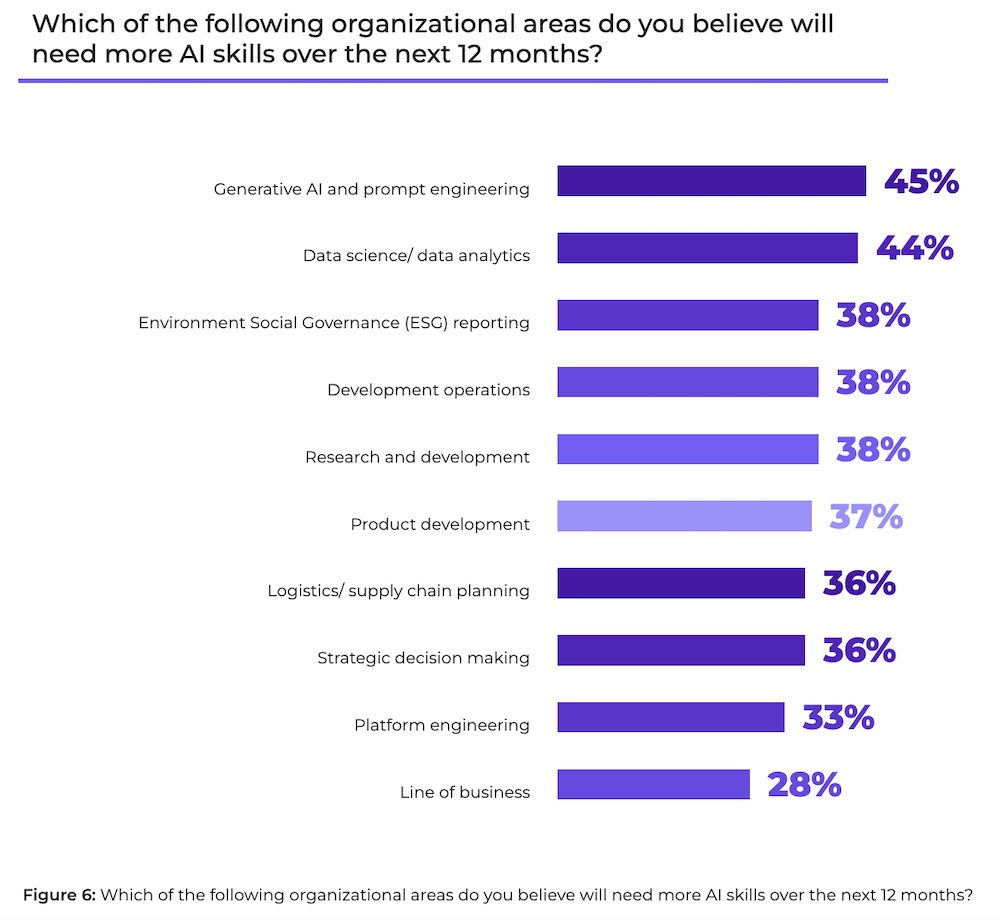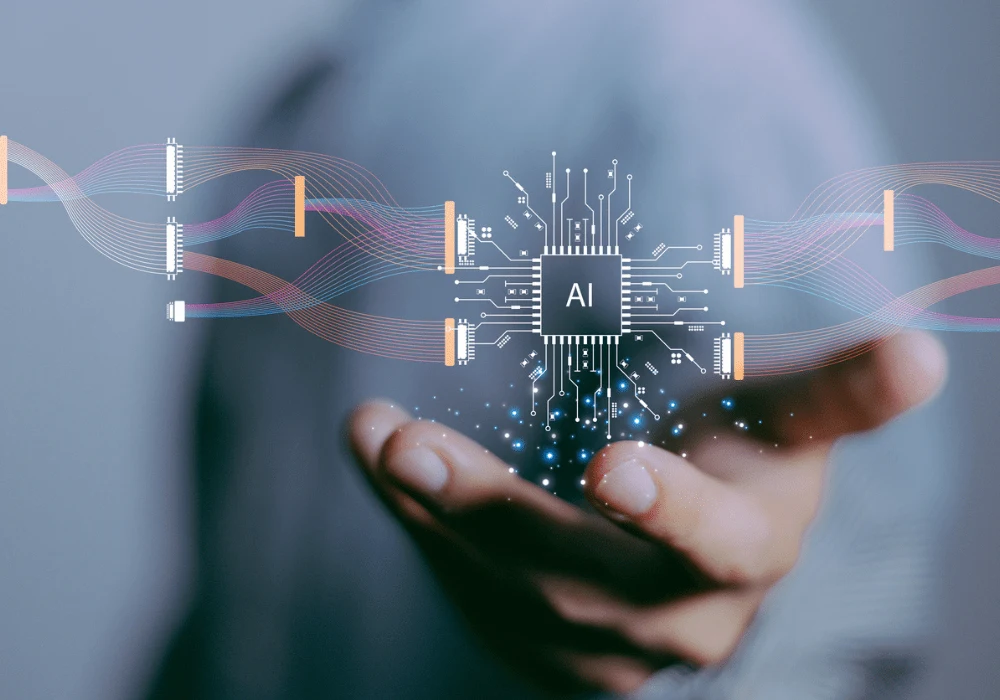Findings from the State of Entperise AI and the Enterprise Cloud Index reveal why IT leaders are enabling AI applications and leveraging AI to manage their complex data center operations.
In recent years, artificial intelligence has moved from hype to business requirement faster than any other emerging technology we’ve seen in decades. And while ChatGPT and other generative AI tools are getting the most buzz, AI is also fundamentally changing IT operations and infrastructure – in particular, the data center. Two recent industry reports – State of Entperise AI and the Enterprise Cloud Index – reveal the many moving parts, needs and challenges IT leaders are grappling with as they move their IT capabilities into the AI era.
IT leaders across industries are taking note. According to the 2024 Nutanix State of Enterprise AI report, 90% say that AI is a top priority for their organization.
Still, recognizing the AI imperative and having the understanding, skills, and resources needed to integrate it strategically are two separate things. For most organizations, significant gaps exist between what they want and plan to do with AI and their current ability to strategically manage those initiatives.
CIOs on the pulse of AI’s evolution know that time is of the essence for getting up to speed. All signs point to a near future where data centers will need to be more than AI ready – they’ll need to be AI-run in order to manage new, complex and high-intensity demands.
“Existing data centers already running on near-peak loads will struggle to cope when businesses shift from testing AI apps to full-blown deployments,” Naveen Chhabra, principal analyst at IT research firm Forrester Research,” told the Wall Street Journal. “It’s like saying you need an eight-lane road, not a two-lane road, to drive your AI apps.”
Organizations will have to make the jump from simply aiming to handle demands of AI-powered applications to also leveraging AI as a primary management tool, or, in other words, shift to AI-run data centers and infrastructures.
AI-Run Data Centers: A Tipping Point
Data centers have been evolving at a rapid clip for the better part of the 21st century, adjusting to the continuous explosion of web and mobile apps. With AI on its way to being a ubiquitous component of modern applications, IT leaders now have to go a step further, redesigning their IT infrastructures to handle its heightened demands.
A big part of achieving this will be attaining the seamless ability to run applications in their ideal environments. According to another recent survey of global IT leaders, the 2024 Enterprise Cloud Index (ECI), diversity of application placement is a primary reason 95% of organizations moved applications from one environment to another over the past year, with AI/ML integration reported as one of the top drivers.

“Enterprises should expect application and data movement to remain constant,” the ECI report states, “and plan infrastructure choices accordingly – emphasizing flexibility and visibility.”
AI will play a critical role in helping organizations achieve this, supporting the growing adoption of hybrid multicloud models and edge computing and enabling a more holistic approach to data center management. AI will be critical to managing how applications and data run across a complex variety of IT infrastructures.
This move toward using and relying upon AI inside IT operations is exposing readiness gaps for many enterprises, particularly related to security, compliance and infrastructure design. This is reflected in the top three challenge areas reported by ECI respondents this year: ransomware and malware protection, data privacy and compliance, and running AI applications.

As data centers grow more complex and interconnected, the potential for security vulnerabilities increases.The same AI systems capable of streamlining operations can, if not properly secured, provide new attack vectors for sophisticated cyber adversaries.
Further, the infrastructure required to support AI is considerably more demanding than traditional data center setups.
AI-Focused Infrastructure Modernization
As AI-run data centers evolve and advance, addressing the dual challenges of security and infrastructure upgrades is crucial to ensure data centers can capitalize on the benefits of AI while mitigating risks associated with its integration
Strategic IT modernization will be essential. AI-driven application landscapes require robust and agile IT frameworks that traditional data centers simply weren’t designed to handle. That means in the years ahead, modernization won’t just be about enhancing capacity, but also fundamentally overhauling infrastructure to handle new AI requirements.
Given the fact that AI is still in its infancy, IT leaders must also think proactively about long-term plans, baking in flexibility and scalability to accommodate future demands as they occur.
According to the Nutanix State of Enterprise AI report, this is on the radar for nearly all current IT leaders – 91% agreed that their IT infrastructures must be improved to support AI, and 83% plan to increase investments in edge strategy specifically for this purpose.

“AI technology adoption will catalyze a new wave of IT infrastructure modernization,” the report highlights, “with an emphasis on seamless data mobility across core and edge environments.”
Addressing Key Challenges
Successful data center transformation to AI-ready and then AI-run requires adopting strategic approaches to address the multifaceted challenges that are part of the process, including the IT modernization journey itself as well as ongoing compliance, security and seamless integration.
To prioritize the most critical upgrades and modernize with minimal disruption, organizations can take a phased approach, starting with the deployment of modular and scalable infrastructure solutions such as hyper-converged infrastructure (HCI), which can be incrementally expanded to meet growing AI demands.
Leveraging containerization and Kubernetes can also help to isolate, manage and scale AI applications more efficiently, reducing the complexity involved with integrating new and legacy systems.
The Nutanix ECI report found containerization is becoming “pervasive,” with 97% reporting that some proportion of their application estate is containerized.

Automating security and compliance is also critical, stated the report. Many organizations are embracing AI-driven tools that monitor the entire infrastructure, delivering real-time alerts and enabling faster response and remediation when issues do arise. These tools generate audit trails and reports to help data centers maintain transparency and ease the burden of day-to-day data privacy and compliance management.
These types of data security capabilities were cited as the number one driver of AI application and infrastructure upgrades for more than half of this year’s Enterprise AI respondents.

Proactively and effectively addressing these and other common challenges associated with AI-run data center transformation is crucial for enabling AI capabilities and supporting the more sophisticated needs of AI applications.
Unified Data Center Management: A Key Solution
As AI-run data centers continue to evolve, unified management is emerging as an essential strategy for managing their complexities and maintaining consistency across on-premise, cloud, and edge environments.
As mentioned, HCI is proving to be one of the most effective approaches, integrating compute, storage, and virtualization into a single and scalable platform that simplifies data center management. This unified management is crucial as the integration of diverse technologies (AI and others) can quickly lead to operational silos and inefficiencies.
“Because mixed IT environments source solutions from a range of providers, and deploy them in different environments, it becomes critically important to employ universal data management, protection, security, and monitoring tools in order to ensure interoperability across heterogeneous platforms,” Nutanix’s ECI report emphasizes.
This centralized view then facilitates more strategic resource allocation and system adjustments in real-time, which are critical for supporting dynamic AI workloads and ensuring high availability and performance.
The consolidated HCI approach also enhances operational resilience, enabling data centers to adapt more quickly to technological advances and changing business demands. This agility is essential for data centers transitioning to AI-driven functionalities, where rapid deployment and seamless integration of new applications are necessary for staying competitive.
Finally, unified data center management significantly enhances IT sustainability. By optimizing power and cooling systems through centralized control, AI-run data centers can significantly reduce their energy consumption. A streamlined HCI architecture minimizes physical hardware needs, further reducing environmental impact.
This is a priority for 88% of this year’s ECI respondents, and more than half report that they’re already taking active steps to implement sustainability initiatives through IT modernization, and 77% saying they plan to increase sustainability investments in 2024.

Sustainable, AI-supported data centers and infrastructure both align with growing global regulatory demands in this area and help organizations meet higher stakeholder expectations for eco-friendly practices.
Addressing The Skills Gap
IT leaders have already recognized skills gaps on their internal teams – gaps that will only widen as AI-run data centers become more prevalent and advanced. Most organizations are planning to increase their talent investments to support AI initiatives, with 84% citing they will expand their engineering and data science teams in the coming years.
They also reported a wide range of organizational areas where they’ll need more AI skills in the next 12 months, including operations, R&D, logistics, and strategic decision making.

Upskilling will be crucial to ensuring effective data center management and minimizing security and compliance risks caused by human error. Training programs must be implemented to enhance the technical skills of IT staff, focusing on areas like AI management, cybersecurity in AI contexts, and the maintenance of AI-driven systems.
At the same time, partnering with an expert service provider can enable organizations to access the resources and expertise they need in a cost-effective way (i.e.—without having to take on the heavier investment associated with hiring additional full-time and/or specialized staff).
IT and data center-related services can be more easily scaled alongside an enterprise’s digital transformation journey than full-time staff, and the level of expertise is often higher. Many service providers offer training programs or resources as well, offering the dual benefit of their strategic expertise coupled with training that enhances internal technical skills.
These partnerships can help mitigate the risks associated with deploying new AI technologies, ensuring that data centers are equipped with the latest AI solutions and that teams are prepared to manage these advancements effectively.
A dual approach of upskilling and partnering with experts ensures that data centers can remain competitive and secure as they adapt to the demands of next-generation AI technologies. By addressing the skills gap proactively, organizations can accelerate their AI initiatives, enhancing operational capabilities and positioning for future success.
Looking Ahead
Looking to the future, the drive towards AI-run data centers signals a fundamental shift in how data is processed, managed, and utilized across industries. As these facilities become increasingly autonomous, the integration of AI will not only optimize operations but also pose new challenges and opportunities for innovation.
The journey toward streamlined and efficient AI-run data centers will require robust planning, advanced security measures, and continuous adaptation to evolving technologies.
Sustainability will also play a critical role. As energy demands grow, finding both efficient and environmentally friendly solutions will be paramount. This will involve not just optimizing existing systems but rethinking data center designs to incorporate renewable energy sources and more efficient cooling technologies.
Moreover, as data centers evolve, so too must the workforce. Bridging the skills gap through comprehensive training programs and strategic partnerships will be essential for equipping IT professionals with the necessary skills to manage sophisticated AI-driven systems.
As AI-run data centers become the standard, the challenge for IT leaders will be to ensure these systems can securely and efficiently meet modern demands while also flexible enough to adapt alongside rapidly-changing technological landscapes and evolving business needs.
Michael Brenner is a keynote speaker, author and CEO of Marketing Insider Group. Michael has written hundreds of articles on sites such as Forbes, Entrepreneur Magazine, and The Guardian and he speaks at dozens of leadership conferences each year covering topics such as marketing, leadership, technology, and business strategy.







